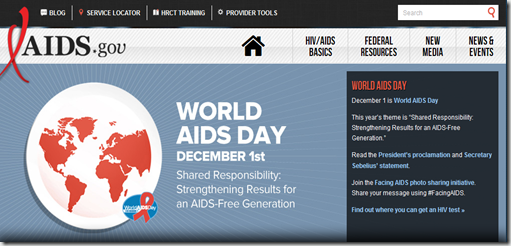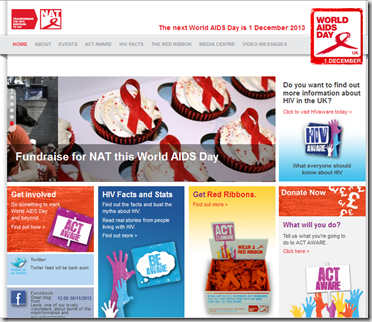Credit AIDS.gov
# 8021
Like so many others, I’ve lost friends and family members to the AIDS pandemic over the past three decades. AIDS has claimed more than 36 million lives since it was first reported 32 years ago, and today there are an estimated 33 million people around the world living with HIV.
The availability of antiretroviral therapy (ART) means that HIV infection isn’t the automatic death sentence it once was, but not everyone is able to receive this vital treatment.
Despite progress in treatments and ongoing work on candidate vaccines, new challenges continue to emerge with this rapidly mutating retrovirus. Just this week Lund University in Sweden announced their discovery of a new, highly aggressive strain of HIV that leads to the development of AIDS much quicker than HIV normally does.
From their press release:
There are over 60 different epidemic strains of HIV-1 in the world, and geographic regions are often dominated by one or two of these. If a person becomes infected with two different strains, they can fuse and a recombined form can occur.
"Recombinants seem to be more vigorous and more aggressive than the strains from which they developed", explained Angelica Palm, a doctoral student at Lund University.
The recombinant studied is called A3/02 and is a cross between the two most common strains in Guinea-Bissau, West Africa - 02AG and A3. It has previously been described by Joakim Esbjörnsson, a postdoctoral fellow at the University of Oxford, who is a co-author of the study.
So far, the new strain has only been identified in West Africa, but other studies have shown that the global spread of different recombinants is increasing. In countries and regions with high levels of immigration, such as the US and Europe, the trend is towards an increasingly mixed and complex HIV flora, unlike in the beginning of the epidemic when a small number of non-recombinant variants of the virus dominated. There is therefore reason to be wary of HIV recombinants in general.
In October, Russian media reported on a rapidly emerging strain of HIV in Siberia, which is now responsible for half of all new infections in that region. And this week the ECDC and WHO, in joint press release, announced that 131,000 new HIV infections were reported in the WHO European region, an increase of 8% over the previous year. They write:
This confirms a steady increase across Europe over the last year: a 9% rise in eastern Europe and central Asia (EECA) countries and a less than 1% rise in the countries of the European Union and European and Economic Area (EU/EEA).
Of the new HIV infections in the Region, almost 102 000 were reported in the EECA and over 29 000 in the EU/EEA. The total number includes more than 55 000 newly diagnosed HIV infections in 2012 reported to ECDC and the WHO, and nearly 76 000 new cases recorded by the Federal Statistics Agency of the Russian Federation through its database.
Each year December 1s is designated World AIDS Day, and this year the theme is "Shared Responsibility: Strengthening Results for an AIDS-Free Generation
A few web resources for you include:
This week’s MMWR from the CDC.
World AIDS Day — December 1, 2013
Weekly
November 29, 2013 / 62(47);946-946World AIDS Day draws attention to the current status of the human immunodeficiency virus/acquired immunodeficiency syndrome (HIV/AIDS) epidemic worldwide. The theme for this year's December 1 observance is "Shared Responsibility: Strengthening Results for an AIDS-Free Generation."
The first cases of AIDS were reported more than 32 years ago in the June 5, 1981, issue of MMWR. Since then, an estimated 36 million persons worldwide have died from HIV/AIDS; an estimated 35.3 million persons continue to live with HIV infection (1).
In the United States, approximately 636,000 persons with AIDS diagnoses have died since the first cases were reported (2); an estimated 1.1 million persons continue to live with HIV infection (3).
Global efforts, including the U.S. President's Emergency Plan for AIDS Relief (for which CDC is an implementing partner), provided antiretroviral therapy to approximately 9.7 million persons in low-income and middle-income countries in 2012, an increase of 1.6 million persons from 2011 (4).
The United State’s government web portal for AIDS/HIV information AIDS.GOV.
And last stop is the WORLD AIDS DAY website, where you can find out more about this ongoing pandemic, and how you can help.


